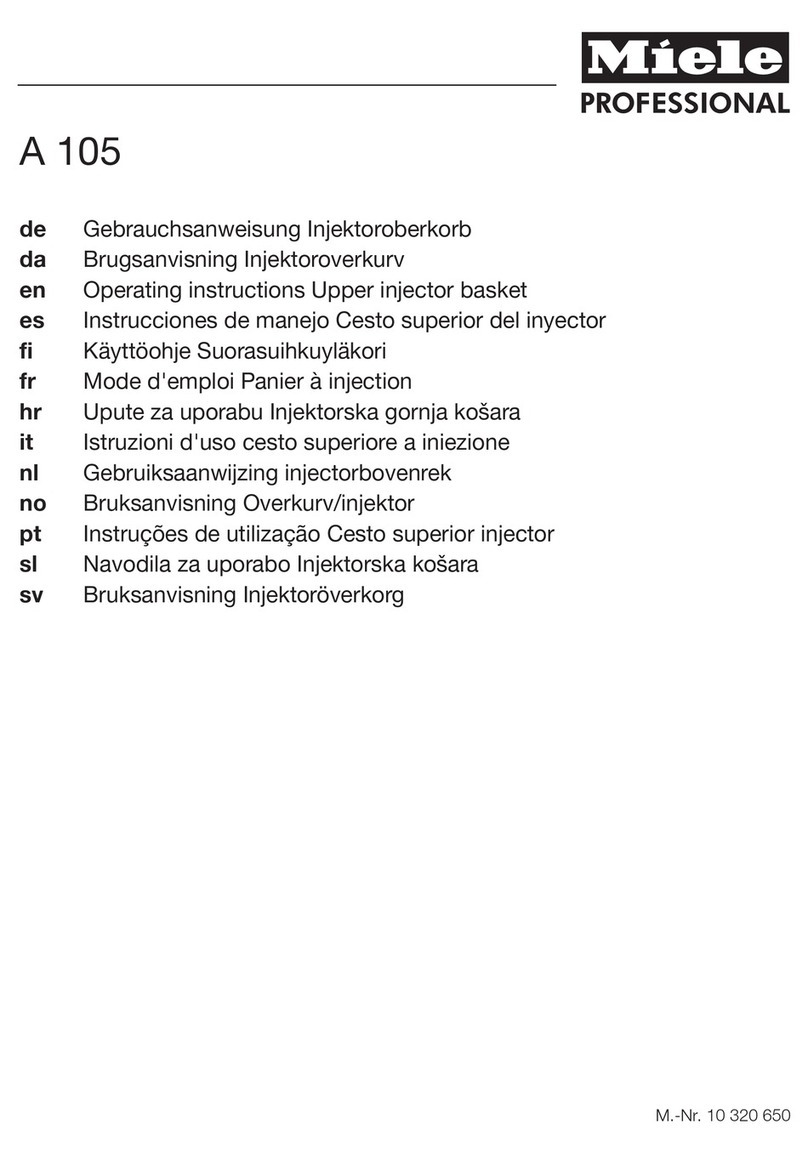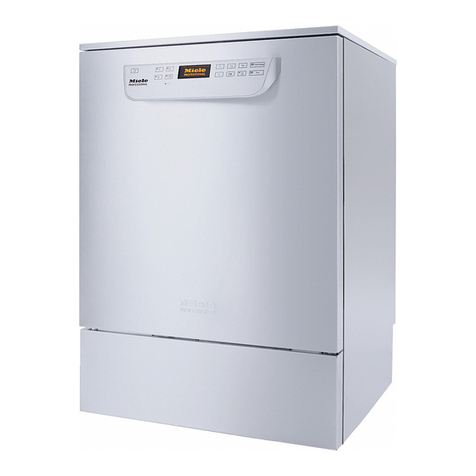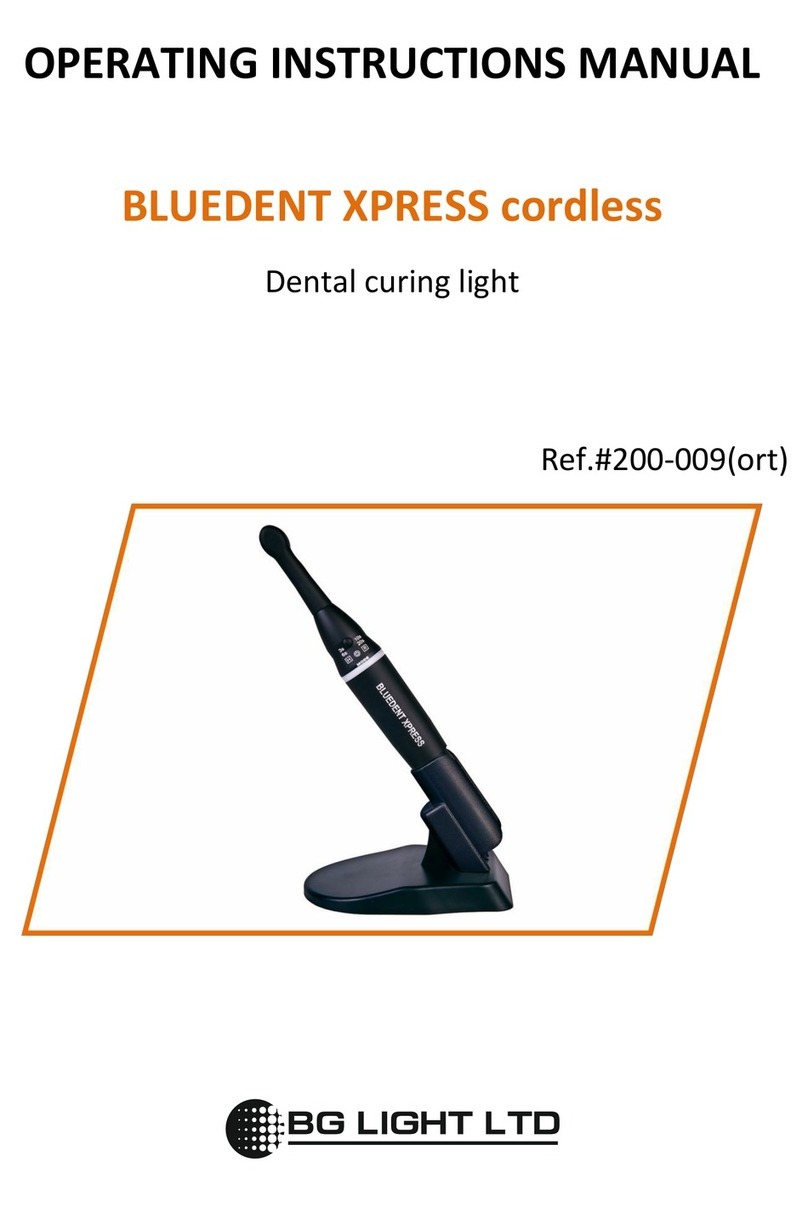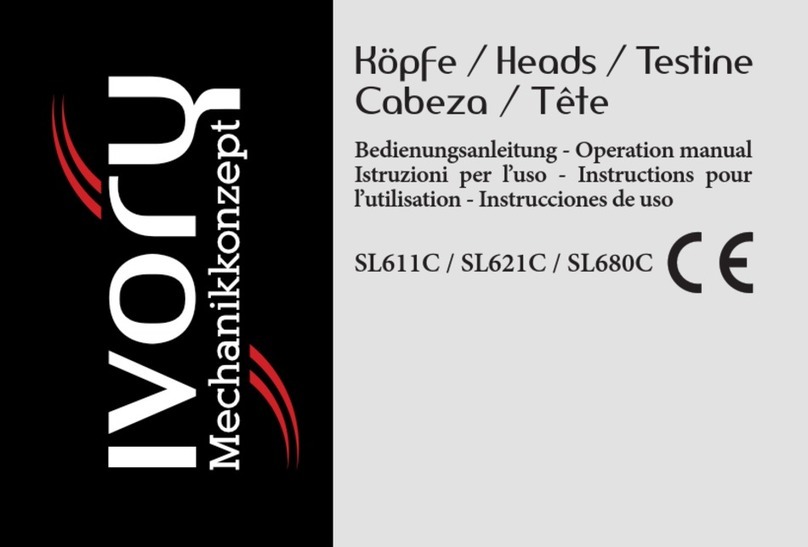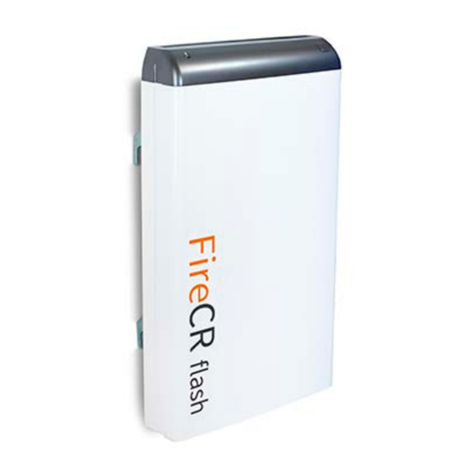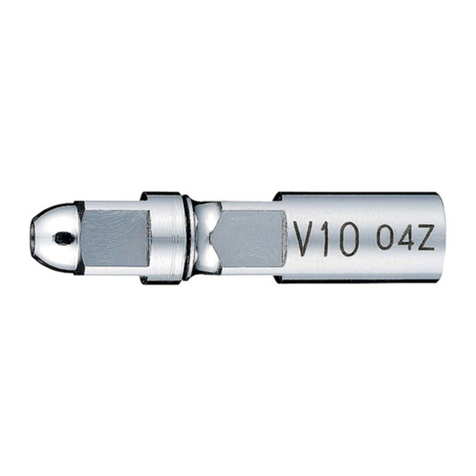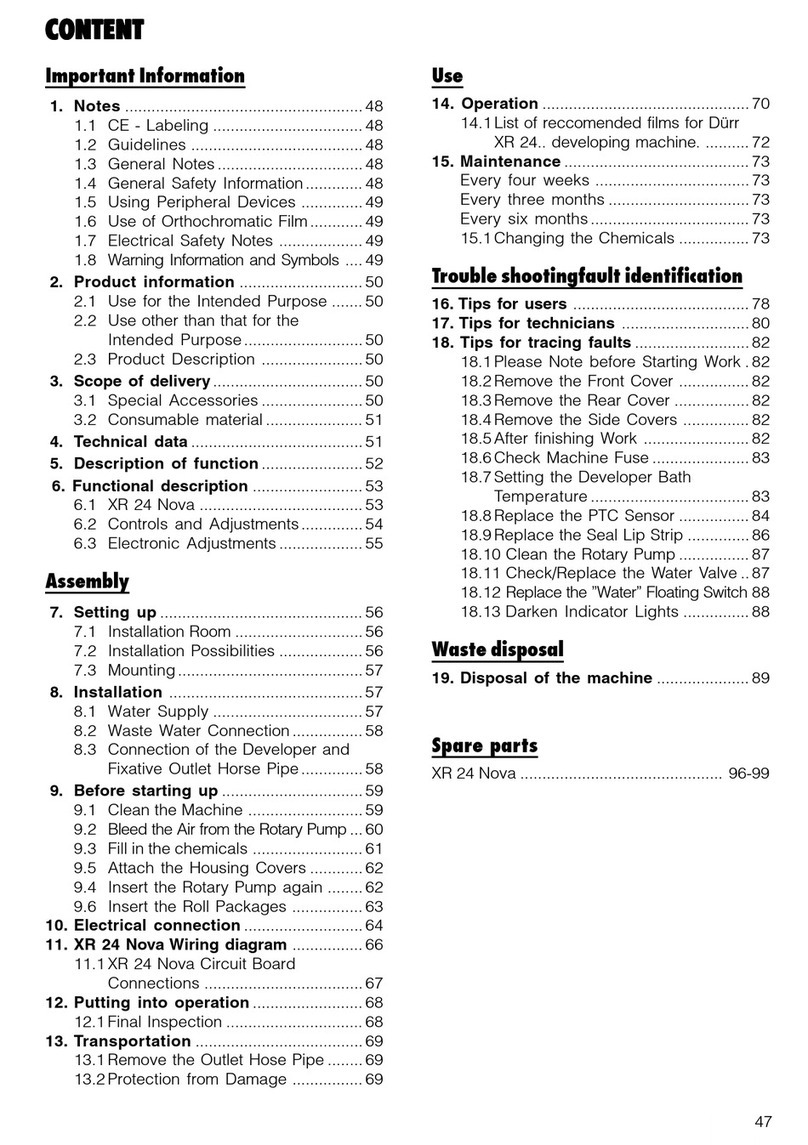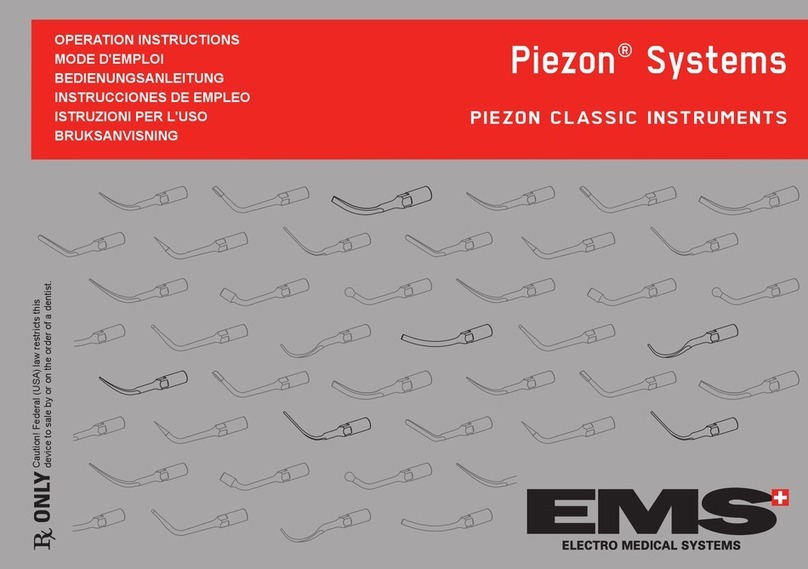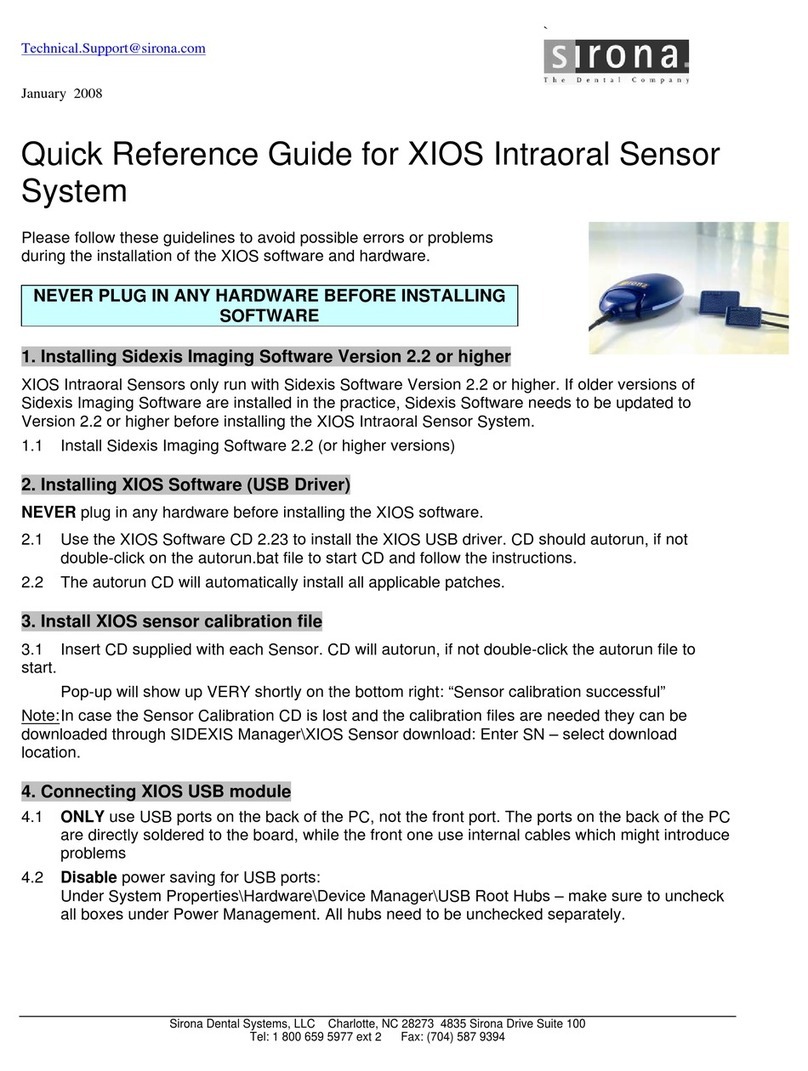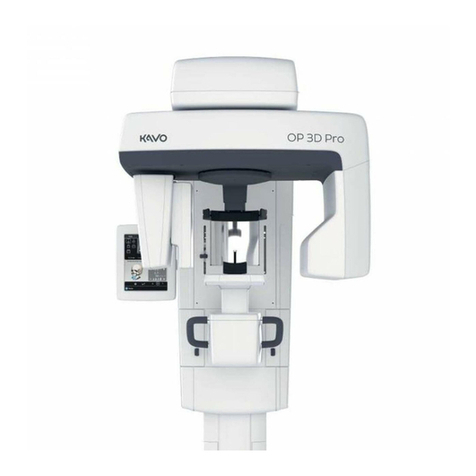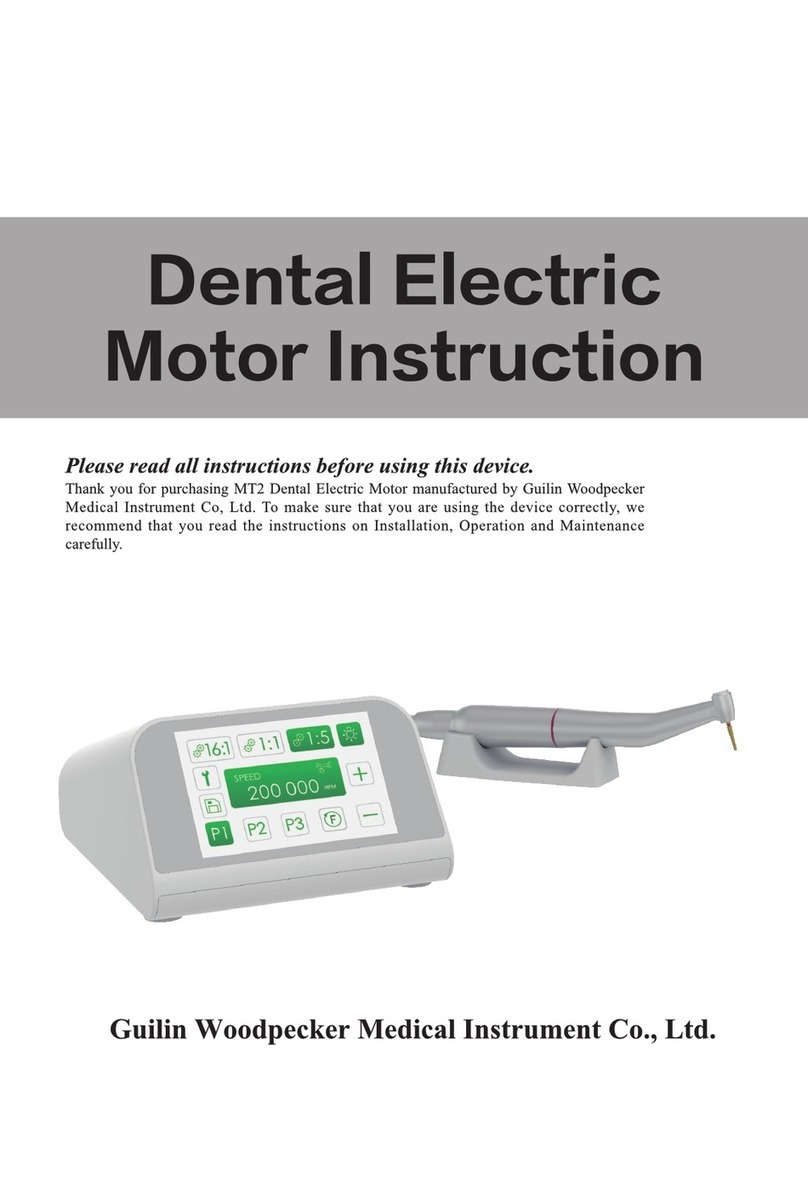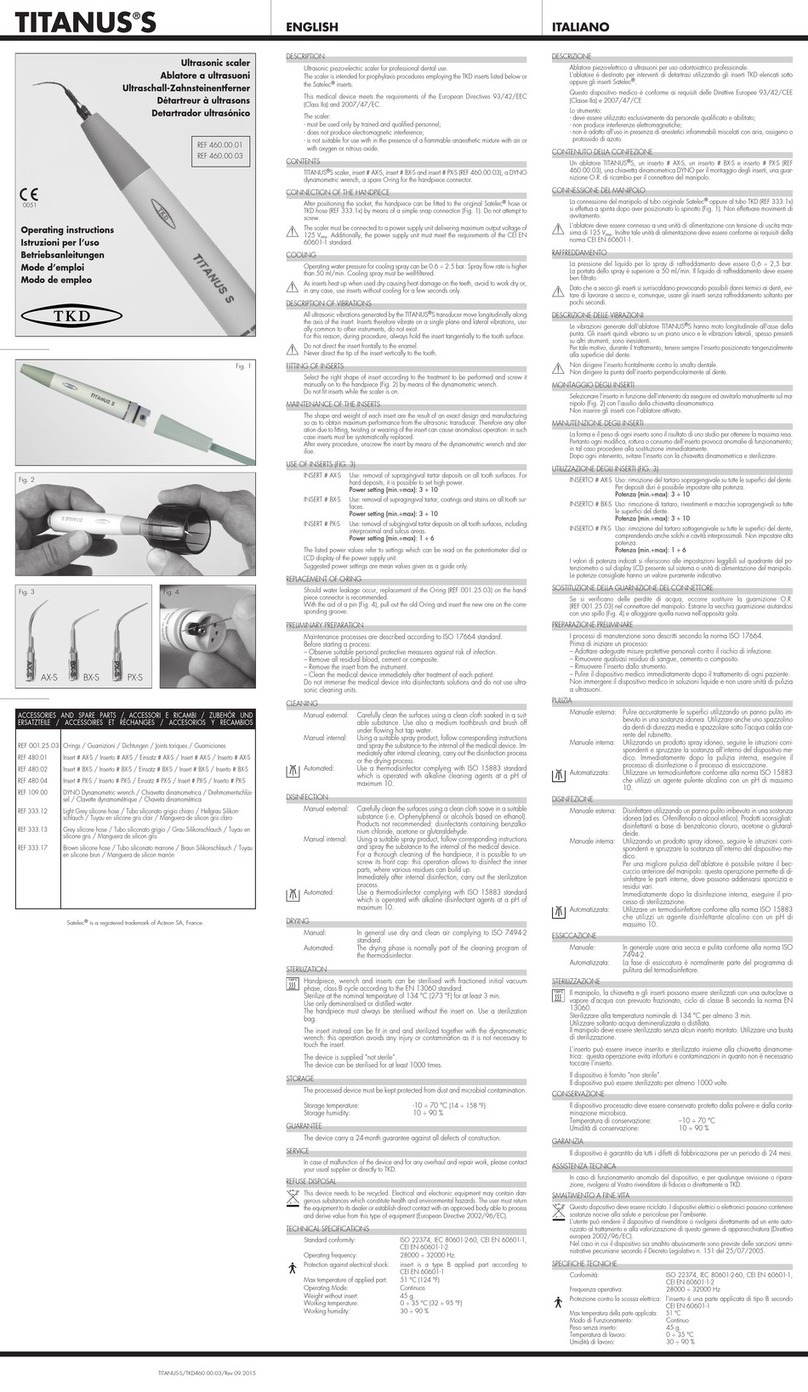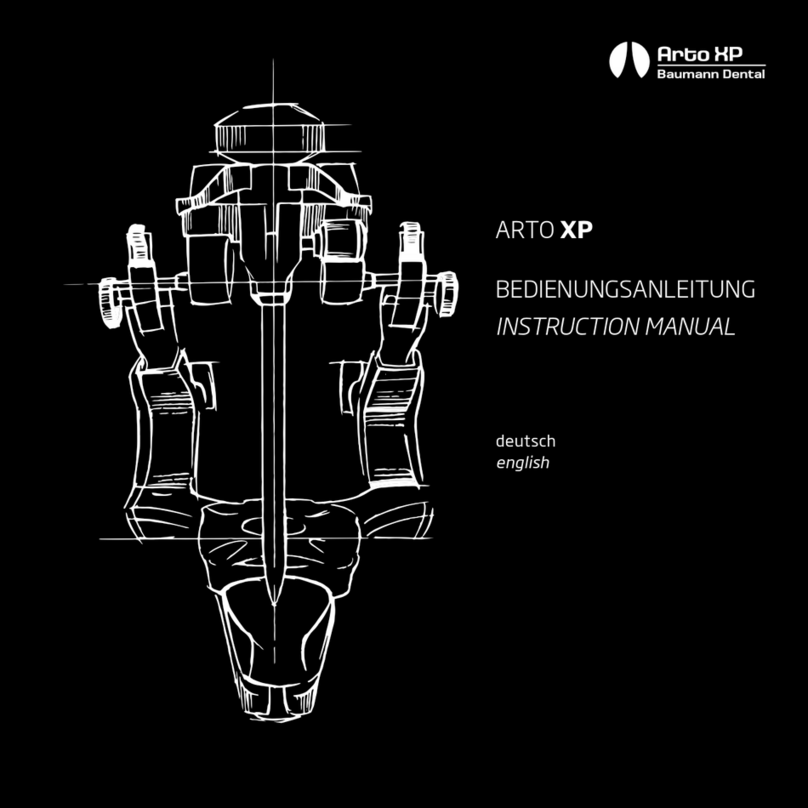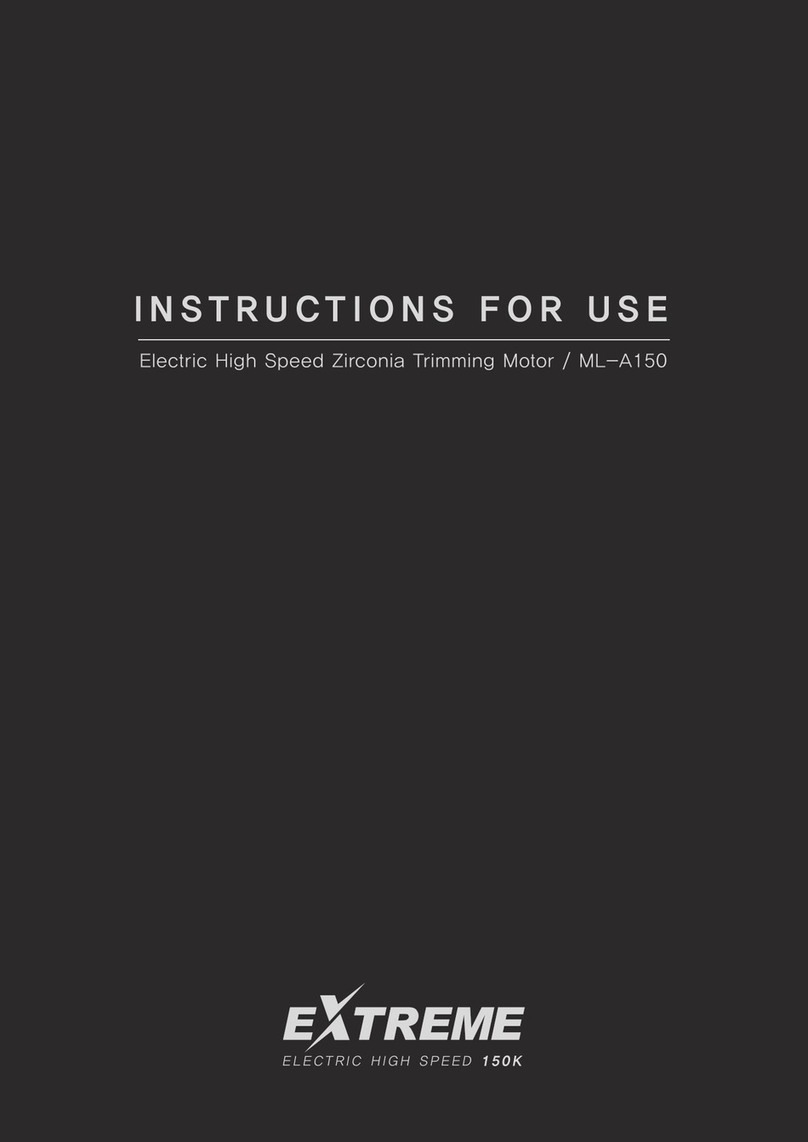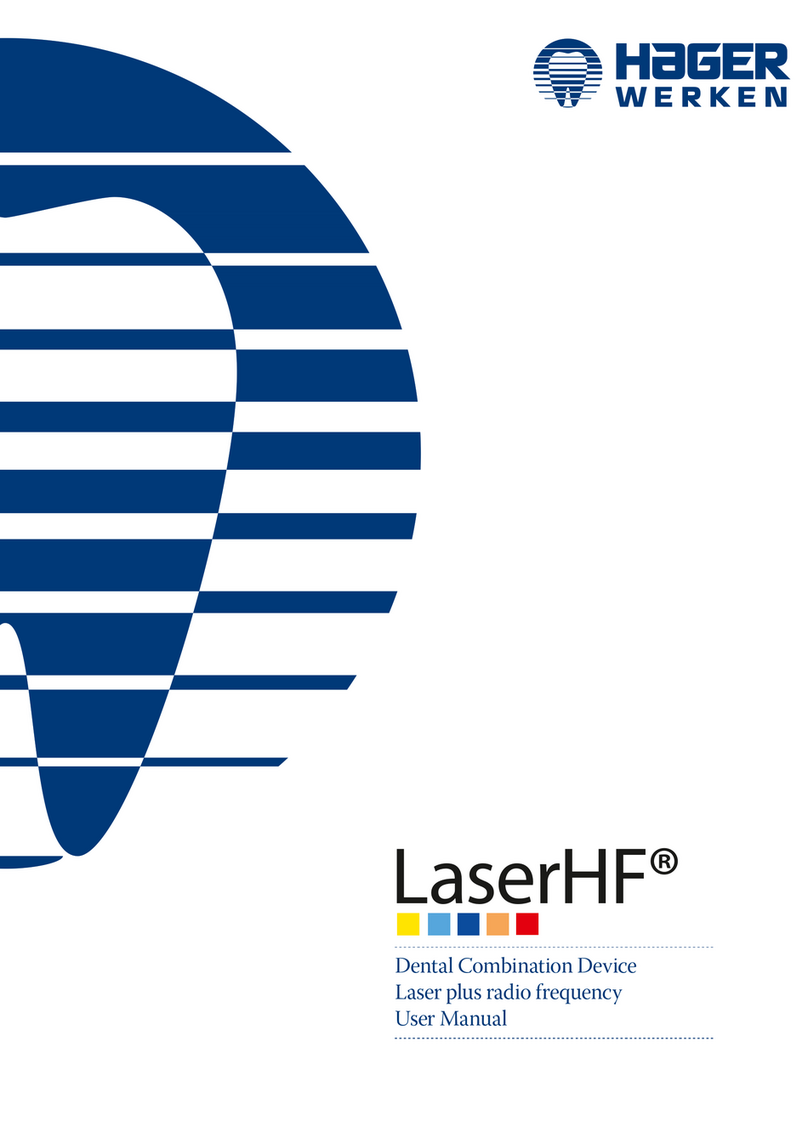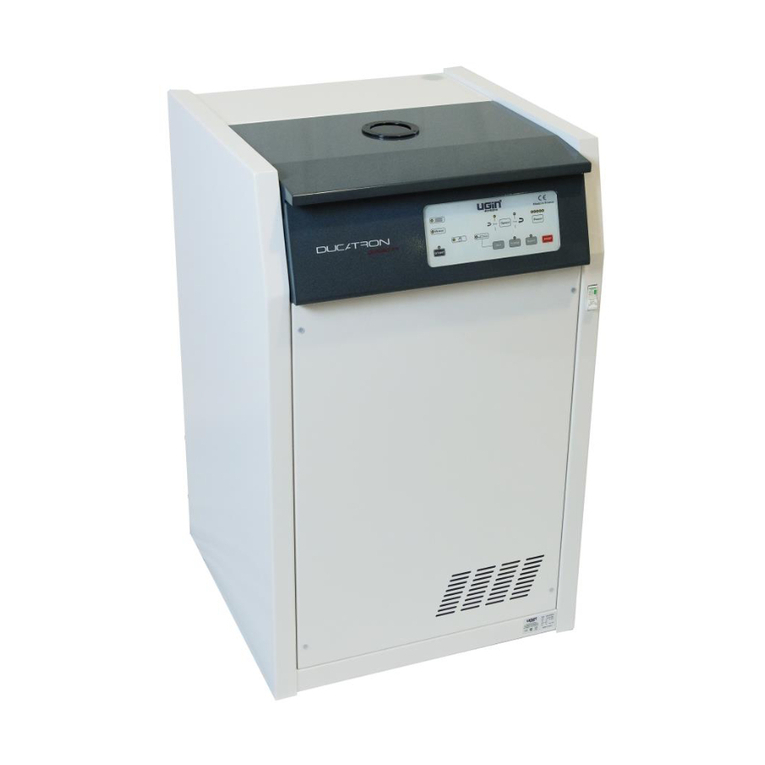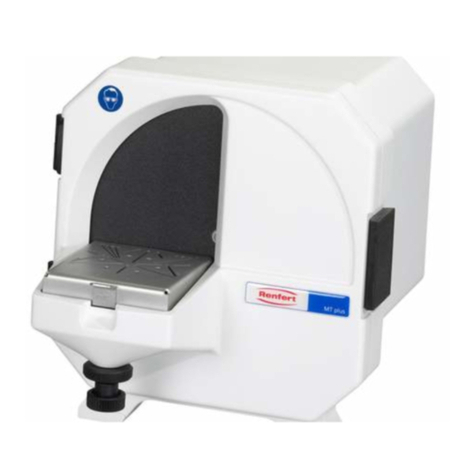Miele G 7881 User manual

Operating Instructions
Dental Thermal Disinfector
G 7881
To prevent accidents
and machine damage
read these instructions
before
installation or use.
UV
M.-Nr. 05 970 440

2

IMPORTANT SAFETY INSTRUCTIONS. . . . . . . . . . . . . . . . . . . . . . . . . . . . . . . . . 4
IMPORTANT SAFETY INSTRUCTIONS. . . . . . . . . . . . . . . . . . . . . . . Center pages
Description of the machine. . . . . . . . . . . . . . . . . . . . . . . . . . . . . . . . . . . . . . . . . . 8
G ide to the machine. . . . . . . . . . . . . . . . . . . . . . . . . . . . . . . . . . . . . . . . . . . . . . 10
Before sing for the first time. . . . . . . . . . . . . . . . . . . . . . . . . . . . . . . . . . . . . . . 12
Opening and closing the door . . . . . . . . . . . . . . . . . . . . . . . . . . . . . . . . . . . . . . 13
Water softener . . . . . . . . . . . . . . . . . . . . . . . . . . . . . . . . . . . . . . . . . . . . . . . . . . . 15
Setting the water softener . . . . . . . . . . . . . . . . . . . . . . . . . . . . . . . . . . . . . . . . . . . 17
Filling the salt reservoir . . . . . . . . . . . . . . . . . . . . . . . . . . . . . . . . . . . . . . . . . . . . . 18
Salt indicator . . . . . . . . . . . . . . . . . . . . . . . . . . . . . . . . . . . . . . . . . . . . . . . . . . . . . 19
Rinse aid . . . . . . . . . . . . . . . . . . . . . . . . . . . . . . . . . . . . . . . . . . . . . . . . . . . . . . . . 20
Setting the dosage. . . . . . . . . . . . . . . . . . . . . . . . . . . . . . . . . . . . . . . . . . . . . . . . . 21
Adding ne tralizing agent. . . . . . . . . . . . . . . . . . . . . . . . . . . . . . . . . . . . . . . . . . 22
Adding detergent . . . . . . . . . . . . . . . . . . . . . . . . . . . . . . . . . . . . . . . . . . . . . . . . . 24
Loading the machine . . . . . . . . . . . . . . . . . . . . . . . . . . . . . . . . . . . . . . . . . . . . . . 29
Adjusting the top basket . . . . . . . . . . . . . . . . . . . . . . . . . . . . . . . . . . . . . . . . . . . . 31
Program selection . . . . . . . . . . . . . . . . . . . . . . . . . . . . . . . . . . . . . . . . . . . . . . . . 32
Operation . . . . . . . . . . . . . . . . . . . . . . . . . . . . . . . . . . . . . . . . . . . . . . . . . . . . . . . 34
Turning on . . . . . . . . . . . . . . . . . . . . . . . . . . . . . . . . . . . . . . . . . . . . . . . . . . . . . . . 34
Starting a program. . . . . . . . . . . . . . . . . . . . . . . . . . . . . . . . . . . . . . . . . . . . . . . . . 34
Drying . . . . . . . . . . . . . . . . . . . . . . . . . . . . . . . . . . . . . . . . . . . . . . . . . . . . . . . . . . 35
Changing a program . . . . . . . . . . . . . . . . . . . . . . . . . . . . . . . . . . . . . . . . . . . . . . . 35
At the end of a program. . . . . . . . . . . . . . . . . . . . . . . . . . . . . . . . . . . . . . . . . . . . . 35
Turning off . . . . . . . . . . . . . . . . . . . . . . . . . . . . . . . . . . . . . . . . . . . . . . . . . . . . . . . 35
Cancelling a program . . . . . . . . . . . . . . . . . . . . . . . . . . . . . . . . . . . . . . . . . . . . . . 36
Programming special f nctions . . . . . . . . . . . . . . . . . . . . . . . . . . . . . . . . . . . . . 37
Machine care . . . . . . . . . . . . . . . . . . . . . . . . . . . . . . . . . . . . . . . . . . . . . . . . . . . . 40
Correcting minor fa lts . . . . . . . . . . . . . . . . . . . . . . . . . . . . . . . . . . . . . . . . . . . . 44
After sales service . . . . . . . . . . . . . . . . . . . . . . . . . . . . . . . . . . . . . . . . . . . . . . . . 46
Caring for the environment . . . . . . . . . . . . . . . . . . . . . . . . . . . . . . . . . . . . . . . . . 48
Installation . . . . . . . . . . . . . . . . . . . . . . . . . . . . . . . . . . . . . . . . . . . . . . . . . . . . . . 49
Electrical connection. . . . . . . . . . . . . . . . . . . . . . . . . . . . . . . . . . . . . . . . . . . . . . 51
Pl mbing. . . . . . . . . . . . . . . . . . . . . . . . . . . . . . . . . . . . . . . . . . . . . . . . . . . . . . . . 53
Technical data . . . . . . . . . . . . . . . . . . . . . . . . . . . . . . . . . . . . . . . . . . . . . . . . . . . 56
Contents
3

This machine complies with all
relevant legal safety requirements.
Incorrect use however, can lead to
personal injury and damage to
property.
Read the operating instructions
carefully before starting to use this
machine. This way you will avoid the
risk of accidents and damage to the
machine.
Keep these instructions in a safe
place for reference, and pass them
on to any future user.
Correct se
This machine is designed for
commercial use and for
specialized applications only, as
described in these Operating
Instructions. Alterations to the machine
or using it for purposes other than those
for which it was designed would be
unauthorized and could cause harm.
Only clean and/or disinfect instruments
and utensils (dental) in this machine if
the manufacturer has stated that they
are suitable for machine processing.
Follow the instrument manufacturer’s
instructions. The manufacturer cannot
be held liable for damage caused by
improper or incorrect use of the
machine.
Please pay attention to the following
notes, to maintain safe proced res.
The machine should only be
installed by a qualified and
competent contractor. Before
connecting the machine, the installer
should check that the voltage and
frequency of the electrical supply
correspond with the details on the data
plate of the machine.
Do not install the machine in an
area where a danger of explosion
or of freezing conditions may be
present.
The electrical safety of this
machine can only be guaranteed if
connected to an electrical system that
complies with all local and national
regulations. It should be checked by an
expert if necessary. The manufacturer
cannot be held responsible for damage
caused by incorrect wiring.
A damaged machine could be
dangerous. Turn off at the main
power immediately and call the Miele
Service Department or an authorized
and trained Miele Service Dealer.
IMPORTANT SAFETY INSTRUCTIONS
4

Personnel operating the machine
should be trained regularly.
Children and untrained personnel must
not be allowed access to the machine
or its controls.
Take care when handling liquid
agents and additives. These may
contain irritant or corrosive ingredients.
Do not use organic solvents as these
could cause an explosion. Wear
protective gloves and goggles. With all
chemical agents the manufacturer’s
safety conditions must be observed.
Avoid inhalation of powder
cleaners.
They can cause burning in the mouth
and throat if swallowed, or inhibit
breathing.
The water in the machine must not
be used as drinking water.
Do not sit or lean on an open door.
The machine could tip up and be
damaged or cause an injury.
Be careful when loading items with
sharp pointed ends. Position them
in the machine so that you do not hurt
yourself or create a danger when the
items are unloaded.
When using this machine in the
higher temperature ranges be
especially careful not to scald or burn
yourself when opening the door!
Baskets and inserts must be allowed to
cool down before they are unloaded.
Any water remaining in containers
could still be very hot. Empty them into
the wash cabinet before taking them
out.
Do not touch the heating elements
if you open the door during or
directly after the end of a program, you
could burn yourself. They remain hot for
some time after the end of the program.
Never clean the machine with a
water hose or a high pressure
hose.
Before any maintenance or repair
work is undertaken, the machine
must be disconnected from the main
power supply.
IMPORTANT SAFETY INSTRUCTIONS
5

Disinfection programs must not be
interrupted, this can have a limiting
effect on the disinfection result.
However, should this be necessary, the
complete program must be repeated.
Only use Miele approved cleaning
agents formulated for use in
washer disinfectors in this machine.
Using unsuitable cleaning agents could
adversely affect items being cleaned as
well as components in the machine.
Pre-treatments with cleaning or
disinfecting agents can create
foam, as can certain types of soiling
and rinsing agents. Foam can have an
adverse effect on the disinfection and
cleaning process. Manual pre-rinsing
may be necessary.
The performance of the cycles was
tested using Neodisher products.
The use of other products is not
discouraged but may not yield identical
results. Please be aware that changes
in formulation, storage conditions, etc.
which may not be publicized by the
chemical manufacturer can have a
negative effect on cleaning results.
When using cleaning agents and
specialized products, it is essential
that the manufacturer’s instructions are
followed. Chemicals must only be used
for the purpose they are designed for
and in the situation specified, to the
exclusion of other chemicals. This will
avoid such dangers as chemical
reactions and material damage.
The machine is designed only for
operation with water and additive
cleaning agents. Organic solvents must
not be used in the machine.
An explosion or machine corrosion
could result.
IMPORTANT SAFETY INSTRUCTIONS
6

In critical applications where very
stringent requirements have to be
met, it is strongly recommended that all
the relevant factors for the process,
such as cleaning agent, quality of water
etc. are discussed with the Miele
Technical Application specialists.
If the cleaning result is subject to
particularly stringent requirements,
a regular quality control test should be
carried out by the user to ensure that
required standards of cleanliness are
being achieved.
The mobile units and special
inserts should only be used for
their specific application.
Empty any containers or utensils
before arranging them in the
machine.
Do not allow any remains of acids
or solvents, and in particular
hydrochloric acid or chloride solutions
to get into the wash cabinet. Similarly
avoid any materials with a corrosive
effect. The presence in compounds of
any solvents should be minimal,
(especially those in hazard class A1).
Ensure that solutions or steam
containing hydrochloric acid do not
come into contact with the steel outer
casing of the machine, to avoid any
corrosion damage.
Please follow the advice on
installation in these instructions
and the separate "Installation
Instructions".
Using accessories
Only use genuine Miele
accessories with this machine.
Consult Miele on the type and
application of such equipment.
Disposal of yo r old machine
Before disposing of your old
machine, first make it unusable.
Disconnect, cut off the cable and any
plug from the cable.
For environmental and safety reasons,
ensure the machine is completely
drained of any residual water and
cleaning agent. (Observe safety
regulations and wear safety goggles
and gloves).
Make the door lock inoperative, so that
children cannot accidentally shut
themselves in. Then make appropriate
arrangements for the safe disposal of
the machine.
The manufacturer cannot be held
liable for damage caused by
non-compliance with these Warning
and Safety instructions.
IMPORTANT SAFETY INSTRUCTIONS
7

High-level disinfection
The G 7881 Dental Thermal Disinfector
is suitable for automatic treatment of
dental instruments and accesories. It
cleans and in the disinfection program
simultaneously thermally disinfects, at
200°F/93°C, instruments and
accessories.
Areas of effectiveness are physical
removal or thermal inactivation of
vegetative bacteria including
mycobacteria, fungi, fungal spores, and
viruses. These categories include the
Mycobacterium tuberculosis and the
Enterococcus faecium.
Important: Only the programs labeled
"Disinfection" disinfect! Only use this
program when handling contaminated
items. All other programs are designed
to clean items without disinfecting
them!
All relevant safety proced res should
be obeyed. Relevant safety procedures
include, but are not limited to, the
Centers for Disease Control’s
Recommended Infection Control
Practices for Dentistry and the OSHA
Bloodborne Pathogens Standard.
The G 7881 Dental Thermal Disinfector
achieves high-level disinfection as
defined by the Spaulding
categorization.
The Spaulding category high-level
disinfection is the same type of means
as in the sterilant category except that
the use pattern is different. The sterilant
is used as a high-level disinfectant by
e.g. reducing the exposure time within
its effective range of tuberculocidal,
virucidal, and bactericidal action.
According to the Centers for Disease
Control’s Recommended Infection
Control Practices for Dentistry,
instruments should be classified in one
of the following categories and be
treated accordingly:
All critical instrments must be
sterilized after treatment in the G 7881
Dental Thermal Disinfector. Critical
instruments are used to penetrate soft
tissue or bone, e.g. forceps, scalpels,
bone chisels or scales.
Semicritical instr ments should be
sterilized after treatment in the G 7881
Dental Thermal Disinfector, If, however,
sterilization is not feasible because the
instrument will be damaged by higher
heat exposure, the instruments may be
treated terminally in the G 7881 Dental
Thermal Disinfector. Semicritical
instruments do not penetrate soft
tissues or bone but contact oral tissues,
e.g. mirrors and amalgam placement
instruments.
Noncritical inst ments may be treated
terminally in the G 7881 Dental Thermal
Disinfector. Noncritical instruments or
devices come into contact only with
intact skin, e.g. external components of
x-ray heads.
Description of the machine
8

Instr ments s itable for processing
in the thermal disinfector
In general, only high quality stainless
steel instruments are suitable for
processing in the G 7881. All
instruments, accessories and other
items to be cleaned and disinfected in
the machine should have the following
properties:
–heat resistance to a temperature of
up to 95°C / 203°F.
–corrosion resistance in the presence
of heat and alkalinity.
The heat retention capacity of stainless
steel allows for fast drying. Plastic has a
lower heat retention capacity, thus
requiring a longer drying time. In this
case, a slightly extended waiting period
of 5-15 minutes may be necessary after
the disinfection cycle.
Aluminum instruments may discolor
during the cleaning process. Aluminum
has only a limited suitability for
processing in this system.
Carbon steel and chrome-plated
instruments may corrode during the
cleaning process. Processing these
types of instruments in the G 7881 is
not recommended.
Handpieces, drill bits, grinders, root
canal instruments or other rotating
instruments are not suitable for the
thermal disinfector. Do not process
them in the thermal disinfector.
Do not clean fiberoptics or electrical
equipment or components in the
thermal disinfector.
Rhodium coated mirrors must be
arranged so that their surfaces do not
suffer any mechanical damage. Not all
specula with glass are suitable for
machine treatment.
If you have questions regarding
whether an instrument is suitable for
processing in the G 7881 Dental
Disinfector, please seek the advice of
the instrument manufacturer.
Water q ality
Good water quality is essential for
processing instruments in the dental
washer disinfector. Otherwise,
instrument corrosion may result.
Poor water quality consists of, but is not
limited to, high concentrations of
chlorides (over 50 ppm). High chloride
levels will cause even high quality
stainless steel instruments to rust when
processed in the machine. Other
effects that may be noticed are
tarnishing or "blueing" of instruments
due to dissolved minerals in the water.
If you notice any of the above
symptoms in your instruments, please
contact a Miele Applications
Specialist at:
(800) 991-9380 Extension 2426
Description of the machine
9

a"On/Off" button
b"Door" button
cDisplay
d"Display" indicator
e"Drying" indicator
f"Start" indicator
g"Start" button
h"Drying" button
i"Display" button
(toggles between the elapsed time,
active wash blocks and actual
temperature displays)
j"Detergent" (liquid) indicator*
Optical interface for service
technician
k"Rinse Aid" indicator
l"Neutralizer" indicator
m"Recharge" indicator
n"Fill / Drain" indicator
oProgram sequence display
pProgram selector
* (only applies to machine fitted with
optional external DOS-Module)
G ide to the machine
10

aConnection for DOS module G 60
(Optional dispenser pump for
liquid detergent)
bFilter combination
cSalt container
(for the water softener)
dDispenser for powder detergent
eRinse aid reservoir
(with dosage selector)
fRinse aid level indicator
G ide to the machine
11

Before using for the first time please
pay special attention to the following
points:
Detailed information on these points
can be fo nd in the relevant section
of the Operating Instr ctions.
Set the water softener nit
The water softener unit must be set to
the water hardness level in your area.
Contact your local water authority to
find your hardness level, in parts per
million (ppm) or grains per gallon
(gr/gal).
The salt reservoir also has to be filled
first with water and then with
reactivation salt.
Filling the salt reservoir with cleaning
agent by mistake will cause serious
damage to the water softener.
Please check every time before
refilling that the package contains
reactivation salt.
Add rinsing agent
Inadvertently filling the rinsing agent
reservoir with cleaning agent
(including liquid cleaning agents
and dishwashing soap) will cause
serious damage to the reservoir.
Only se detergents s itable for se
in disinfecting washers.
Do not use detergents formulated for
use in domestic dishwashers.
Load the machine caref lly
Arrange the load so that water will
come into contact with all the surfaces.
Concealed surfaces will not be
cleaned.
The spray arms must not be blocked by
any items.
Adding detergent
Follow the dosage recommendations
from the cleaning agent manufacturer.
The filter combination at the base of
the wash cabinet and the spray arms
m st be clean.
Regular checking and cleaning is
essential.
Before sing for the first time
12

Electric door lock
The machine is equipped with an
electric door lock. The door can only be
opened when the electrical supply to
the machine is turned on, and the
"On/Off" button is pressed.
To open the door
^Press the "Door" button in as far as it
will go. At the same time, grip the
handle and open the door.
After the first intake of water, the door
remains locked and cannot be opened
until the end of the program (except
during the "Rinse" and "Drain"
programs). The machine can be
programmed to open during the
"Drying" program, if desired.
Do not touch the heating elements.
They remain hot for some time after
the end of the program and can
cause burns.
To close the door
^Lift the door upwards and push it
until it clicks shut. Do not press the
release catch while shutting the door.
To cancel a program
If a program has to be canceled in an
emergency, e.g. the program has been
interrupted due to a fault, the door will
have to be opened manually.
^Turn the program selector to the
"Stop" fposition. The program is
canceled after approximately
2 seconds.
Opening and closing the door
13

To open the door with the
emergency release
The emergency release should only be
used when the door cannot be opened
normally, e.g. in the event of a power
failure.
^Turn the program selector to "Stop"
f.
^Press the "On/Off" button to turn the
machine off.
^Take precaution against pressure
wave release (rapid opening of the
door). ^Pull the emergency release cable
(located at the bottom of the machine
behind the service panel) downwards
to open the door.
The door latch will reset after the
emergency cable has been activated.
Opening and closing the door
14

Before using the machine for the first
time, the water softener should be
programmed. The water needs to be
softened to avoid calcium deposit
buildup on instruments and in the
machine itself.
To ensure a steady supply of soft water:
1. Make sure the water softener is
programmed correctly.
The softener contains settings from
1 - 60 gr/gal or 20 - 1080 ppm.
2. The salt reservoir must be filled with
reactivation salt.
(If the water hardness level is below
4 gr/gal [70 ppm]), the reservoir
does not need to be filled.)
The machine is set at the factory for a
water hardness level of 19 gr/gal
(340 ppm).
Your local water authority will advise
you on the water hardness in your
area. If the water supply is harder or
softer than the factory setting
(including below 4 gr/gal or
70 ppm), the setting will need to be
changed. See "Setting the water
softener".
Water softener
15

Settings
Settings
1 - 30
gr/gal
1 - 30
ppm
CaCO3
Settings
31 - 60
gr/gal
31 - 60
ppm
CaCO3
1
2
3
4
5
6
7
8
9
10
11
12
13
14
15
16
17
18
19
20
21
22
23
24
25
26
27
28
29
30
1
2
3
4
5
6
7
8
9
10
11
12
13
14
15
16
17
18
19 *)
20
21
22
23
24
25
26
27
28
29
30
20
40
50
70
90
110
130
140
160
180
200
220
230
250
270
290
310
320
340
360
380
400
410
430
450
470
490
500
520
540
31
32
33
34
35
36
37
38
39
40
41
42
43
44
45
46
47
48
49
50
51
52
53
54
55
56
57
58
59
60
31
32
33
34
35
36
37
38
39
40
41
42
43
44
45
46
47
48
49
50
51
52
53
54
55
56
57
58
59
60
560
580
590
610
630
650
670
680
700
720
740
760
770
790
810
830
850
860
880
900
920
940
950
970
990
1010
1030
1040
1060
1080
*) factory setting
Water softener
16

Setting the water softener
^Turn off the machine with the "On/Off"
button.
^Turn the program selector to the
"Stop" fposition.
^Press and hold the "Start" 6and
"Display" ßbuttons at the same
time. Turn the machine on with the
"On/Off" button.
The current program status "P..." will
appear in the display and the
"Fill/Drain" indicator will illuminate.
^Press the "Drying" 0button once.
"E01" (programming level 1) will
appear in the display.
^Turn the program selector one switch
position clockwise (1 o’clock
position).
The number "19" will appear in the
display (this indicates the factory
water hardness setting in gr/gal,
equivalent to 340 ppm).
^Press the "Display" ßbutton as
many times as necessary, or hold it in
until the required value (hardness
level in gr/gal) appears in the display.
Once the number "60" has been
reached, the counter will begin again
at "0".
^Press the "Start" 6button. "SP" will
appear in the display.
^Press the "Start" 6button again.
The setting will now be stored in
memory. The display will go out.
For future servicing, it is useful to make
a note of your water hardness level.
^Enter your water hardness level here:
gr/gal
or
ppm
Water softener
17

Filling the salt reservoir
Only special, coarse-grained
reactivation salt* should be used in
this machine.
*Available from Miele’s distributor.
Please see back page for more
information.
Do not use other types of salt, e.g. table
salt, agricultural or gritting salt. These
could contain components which are
insoluble in water and could damage
the water softener. If in doubt, consult
Miele’s Professional Department.
The salt reservoir holds approx. 2.5 kg
of salt.
,Inadvertently filling the salt
reservoir with cleaning agent will
damage the water softener.
Before filling, make sure that you are
using reactivation salt.
^Remove the bottom basket from the
machine.
^Unscrew the salt reservoir cap.
Before filling the salt reservoir with
reactivation salt for the first time, fill it
with approx. 2.5 liters of water.
^Place the funnel provided in place.
^Carefully fill the reservoir with salt.
Displaced water will run out as it is
being filled.
^Wipe any residual salt off the screw
threads on the socket.
^Screw the cap on firmly.
^Immediately after this step: Run the
"Rinse" program to remove any traces
of salt from the cabinet.
Note: There may be a delay before the
"Rinse" program starts due to the
reactivation of the water softener.
Water softener
18

Salt indicator
When the salt reservoir is empty, the
"Recharge" indicator, b, illuminates to
remind you to fill the reservoir.
Reactivation takes place automatically
during a program. The "Recharging"
indicator, a, illuminates while this is
occurring.
Water softener
19

Rinse aid is necessary to ensure water
does not cling to and leave marks on
items during the drying phase. It also
enables items to dry faster after they
have been washed.
Rinse aid is poured into the storage
reservoir, and a pre-set amount is
dispensed automatically.
The rinse aid reservoir holds
approximately 180 ml.
Inadvertently filling the rinse aid
reservoir with detergent (including
liquid detergent) will damage the
reservoir. Be sure to use a rinse aid
which is s itable for se in
disinfecting washers.
^The reservoir must be filled with rinse
aid when the "Rinse aid" indicator
illuminates.
There is also a level indicator for the
rinse aid reservoir on the inside of the
door (see illustration on the right).
^Open the door f lly.
^Unscrew the cap.
^Pour rinse aid into the storage
container until the level indicator is
dark (see arrow in the illustration).
Use a funnel if necessary.
^Screw the cap back on and wipe up
any spilled rinse aid. This prevents
over-foaming from occuring during
the next program.
^Wait until the "Rinse aid" indicator on
the control panel illuminates before
adding more rinse agent.
Rinse aid
20
Other manuals for G 7881
2
Table of contents
Other Miele Dental Equipment manuals

